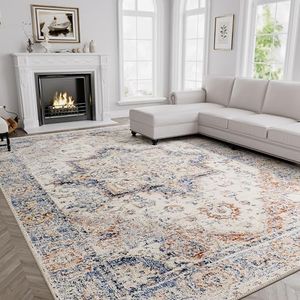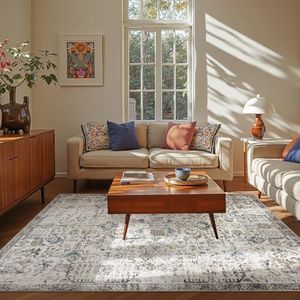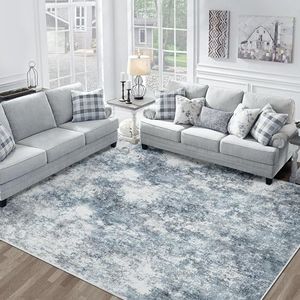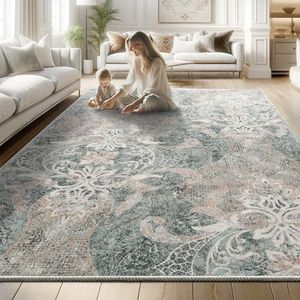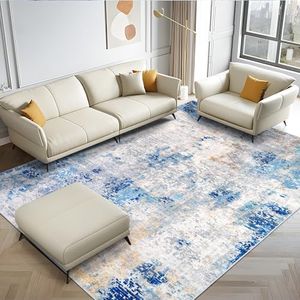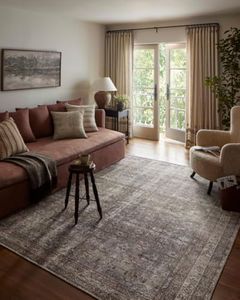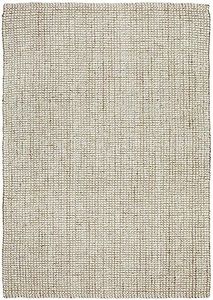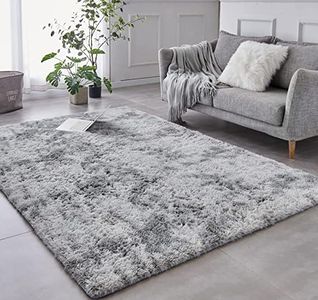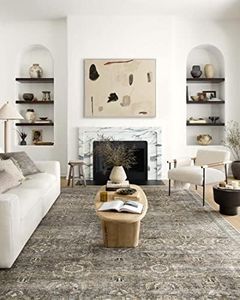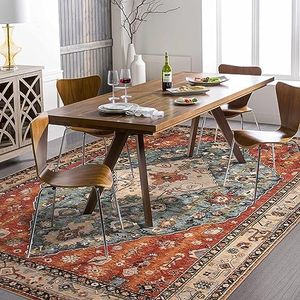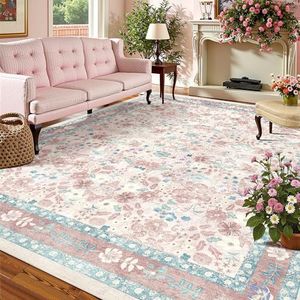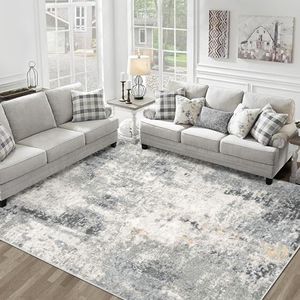We Use CookiesWe use cookies to enhance the security, performance,
functionality and for analytical and promotional activities. By continuing to browse this site you
are agreeing to our privacy policy
10 Best Area Rugs
From leading brands and best sellers available on the web.Buying Guide for the Best Area Rugs
Choosing the right area rug can transform a space, making it feel cozy, stylish, or even larger. When shopping for an area rug, it's important to find one that fits your space, lifestyle, and design preferences. Considering a few essential features will help you find a rug that looks great and lasts for years.SizeRug size refers to the dimensions of the rug and directly influences its effect on your room. A rug that's too small can make a space feel disconnected, while a rug that's too large may overwhelm the room. Typical sizes include small accent rugs, medium rugs for seating areas, and large rugs that anchor a whole room. When choosing, think about your furniture arrangement—rugs should generally fit under the main furniture or create a clear zone. Measure your room and visualize the rug’s placement to ensure it fits your needs, like creating warmth under a coffee table or covering high-traffic areas.
MaterialThe material of an area rug affects its look, feel, durability, and how easy it is to clean. Common materials include wool (soft and resilient), synthetic fibers (like nylon or polyester, which are budget-friendly and stain-resistant), natural fibers (such as jute and sisal, which offer a rustic look), and cotton (lightweight and easy to clean). If you need something soft and plush, like in a bedroom, wool is excellent. For busy areas—like a hallway—choose a tough, easy-to-wash material. Consider your lifestyle and room usage to guide the material choice.
Pile HeightPile height refers to how tall or thick the fibers are on the rug. Low-pile rugs have short fibers and feel flatter, making them easier to clean and better for high-traffic or dining areas where chairs move. Medium to high-pile rugs are plusher and feel cozier underfoot, which is great for bedrooms or living rooms but can be harder to clean and might trap more dust. Choose low-pile for practicality or high-pile for comfort, based on where you’ll use the rug.
Pattern and ColorThe pattern and color of a rug help set the mood and style of a room. Bold patterns can make a statement, hide stains, or tie together different colors in your decor, while solid colors are versatile and can create a calming effect. Light colors can open up small spaces but may show marks faster; dark or patterned rugs are more forgiving in busy homes. Think about the style you want (traditional, modern, playful, etc.) and if you need the rug to stand out or blend in with your existing decor.
Backing and GripRug backing refers to the underside layer, which impacts how the rug stays in place and how it affects your floors. Some backings provide grip to stop slip, while others might require a separate non-slip pad. If your rug will be on hardwood or tile, choose one with a non-slip backing or plan to buy a rug pad to prevent movement and protect the floor. This is particularly important in homes with kids or pets to reduce slipping hazards.
Care and MaintenanceHow you clean and care for an area rug will depend on its material and construction. Some rugs are machine washable, while others might only need regular vacuuming and spot cleaning. Consider how much time you're willing to spend maintaining the rug—high-traffic areas or homes with pets and children benefit from rugs that are easy to clean or resistant to stains. Always check care instructions to be sure you’re picking a rug that fits your lifestyle.
